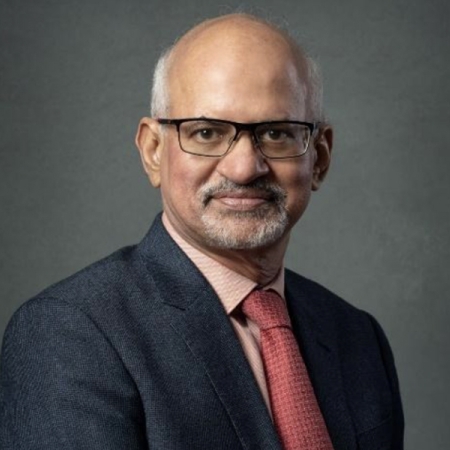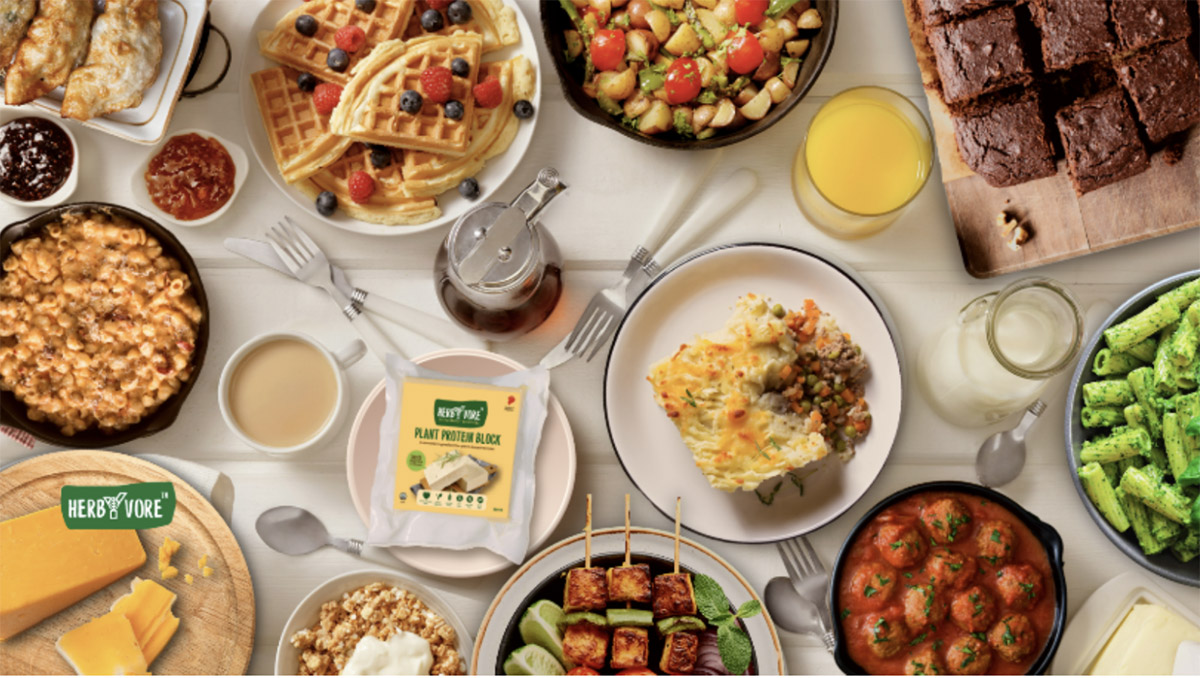January 4, 2023
GPC’s Executive Vice President and Chairman of Agrocorp speaks to Dario Bard on his outlook for the global pulse industry as the pandemic subsides.


From his desk as chairman and managing director of Agrocorp, an agrocommodities and food supply chain company that he founded in 1990, Vijay Iyengar has an exceptionally good vantage point from which to survey the global pulse trade. Agrocorp, a GPC President’s Club Platinum Partner, is based in Singapore, a key pulse trading hub that sees 30-40% of the world’s pulse trade pass through its ports. The company sources a wide range of pulses from leading origins, including Canada, the U.S., Australia and Myanmar, and supplies the world’s major pulse markets, including India, Bangladesh, China, Pakistan, Sri Lanka, Nepal, Turkey and the countries of the Middle East.
As the COVID pandemic subsides, with the number of critical cases trending downward and recovery rates approaching 99%, the GPC’s Dario Bard reached out to Vijay to get his views on the outlook for the global pulse trade in a post-pandemic world.
The stability of food supply chains is crucial to the food security of people around the world. Since the beginning of 2020, this stability has been undergoing one of the most vigorous pressure tests ever due to the COVID-19 outbreak. The health pandemic has turned into an economic threat to food security globally in the forms of lockdowns, economic decline, food trade restrictions, supply change disruptions and rising food inflation. The price of pulses in retail as well as wholesale markets has undergone significant fluctuations during COVID-19 due to disrupted supply chains and changes in consumption patterns. The increase in pulse prices impacted the level of financing as bank limits were not in sync with the rise in prices.
COVID-19 presented the global pulse industry with many unprecedented challenges. To overcome them, it was critical for us to remain cautious yet agile and optimistic. What I saw was the global pulse industry’s agility and tenacity, with all its members ready to return to full operations and pull things back up once we saw signs of recovery.
Post pandemic, I am observing the normalization in freight and logistics, particularly in container shipping, back to pre-COVID days, which is a very positive sign. We have also seen an increase in the cost of fertilizers, labour and power that has driven up the base price of agri-commodities. Pulse exports from Russia and Ukraine have declined due to the ongoing war. Pakistan has emerged as a sizeable importer of bulk pulses from Canada and Australia. Emerging economies are feeling the pinch of the stronger US dollar and weaker currencies, and hence some are scaling back demand. Finally, higher interest rates are putting inflationary pressure on financing.
Consumer habits have also changed. Now there is more emphasis on health and increased knowledge of how nutritious foods can contribute to better health. With this trend, plus the increased attention on food security (as a result of the Ukraine war) and climate change, there is growing interest in the consumption of plant-based protein. Traditionally, pulses are consumed in certain cultures more so than others. But now, with the extraction of protein from pulses to serve as raw materials for plant-based meats and beverages, as well as vegan cheeses, there is the potential for pulse consumption to increase exponentially.
The trend towards consuming more plant-based foods is not a fad. This is clearly evident from demand patterns we are seeing, particularly in many developed economies. The main reason people embrace a plant-based diet, mostly as flexitarians, is attributed to health concerns. That has become much more of a priority post-COVID. Other trends fuelling this growth include concerns pertaining to climate change, as well as the growing concern over the dangers of consuming meat and seafood (think increasing antibiotic resistance as one of the problems with traditional sources of meat/seafood).
Here at Agrocorp, we have invested in a plant protein extraction facility in Canada. There, we source peas from our local network of farmers and work to extract plant protein from these peas, which serves as the protein ingredient in our plant-based HerbYvore brand of consumer food products. Some of the new HerbYvore products that we will be launching soon include a range of vegan cheeses made with pea protein. As you can see, there continues to be a lot of innovation still taking place in the plant-based foods space.

Agrocorp’s plant protein extraction facility in Canada.
Digitalization and blockchain are great tools for traceability and will be increasingly valued by consumers who are concerned about where their food is sourced from. The use of these technologies also has the potential to shorten the supply chain, particularly in the flow of shipping documents. Greater transparency with the use of blockchain technology will certainly be welcomed by stakeholders involved in all stages of the supply chain.
“Digitalization and blockchain are great tools for traceability and will be increasingly valued by consumers who are concerned about where their food is sourced from.”
The global pulse trade has yet to fully recover post-COVID as there are other forces at play. For example, despite increased demand for pulses, the world’s biggest pulse supplier, namely Canada, is still a reluctant seller, as growers there are still recovering from the severe North American drought and opting to hold onto stocks. Australia, too, is still struggling to recover its logistical competitiveness as container availability there is still tough. Finally, the war in the Black Sea has disrupted the food grain supply, including that of pulses. On the buyers’ side, Egypt, Pakistan, Sri Lanka and Bangladesh all have foreign exchange issues, and that has led to a bit of demand contraction as a result.
Water finds its level and trade often finds a way. For instance, in Russia, its pea production is being consumed domestically as feed, altering food rations within the country. In years to come, if exports normalize, Russian peas may still only be available sparingly for the international market.
Turning to Myanmar, because of the issues there, Africa has become a more competitive source of pulses for India. Turkey has as well, as it is splitting peas and selling them into tenders.
Furthermore, in India, the world’s number one pulse producer, consumer and importer, there is strong advocacy for better farmer income and for food self-sufficiency. The government there is seeking to reduce imports, change tariffs and increase MSPs for farmers.
Lastly, all around the world, high grain and oilseed prices are still creating competition for pulse acres.
This year in Canada, production recovered to the five-year average. Australia’s production has been above the five-year average. Myanmar and the pulse-exporting nations of Africa are well poised. And India, the biggest pulse producer, has had decent crops.
In India, with the import ban on yellow peas, its domestic yellow pea production keeps getting better. The price difference between yellow peas and desi chickpeas once used to keep the lid on domestic pea prices, but that has been thrown completely out of whack.
In terms of demand, it remains steady from the larger economies like India, China and the European Union. However, a few key buyers, such as Sri Lanka, Nepal, Pakistan, Bangladesh and the countries in the Mid East, are struggling with import capacity due to the lack of foreign exchange reserves, which may curb demand a bit.
China is the biggest consumer in the world and there is no question it holds the key to global pea demand. Its consumption patterns and its ability to modulate demand will continue to influence global pea markets. Given the protein premium of soy and other feedstuff, incremental feed demand will require arbitrage between pea pricing and animal feed pricing.
All of the major pulses are adequately supplied with some rationing of demand by smaller economies due to macros playing the spoilsport. I wouldn’t pick out any particular product, but I would say that as a basket, it seems the pulses index is a bit over heated.

Photo courtesy of Agrocorp.
All GPC members need to spread the word of the organization’s success. As our membership broadens, our strength as an industry will grow by leaps and bounds.
I would just like to close by emphasizing that the GPC is a great forum for the industry. Thanks to the organization, the industry now has the GPC pulses contract, we celebrated the International Year of Pulses and we are now keeping the momentum going with World Pulses Day every February 10. All GPC members need to spread the word of the organization’s success. As our membership broadens, our strength as an industry will grow by leaps and bounds.

Vijay Iyengar / post-COVID / Agrocorp / Canada / U.S. / Australia / India / Bangladesh / China / Pakistan / Sri Lanka / logistics / container shipping / plant-based
Disclaimer: The opinions or views expressed in this publication are those of the authors or quoted persons. They do not purport to reflect the opinions or views of the Global Pulse Confederation or its members.